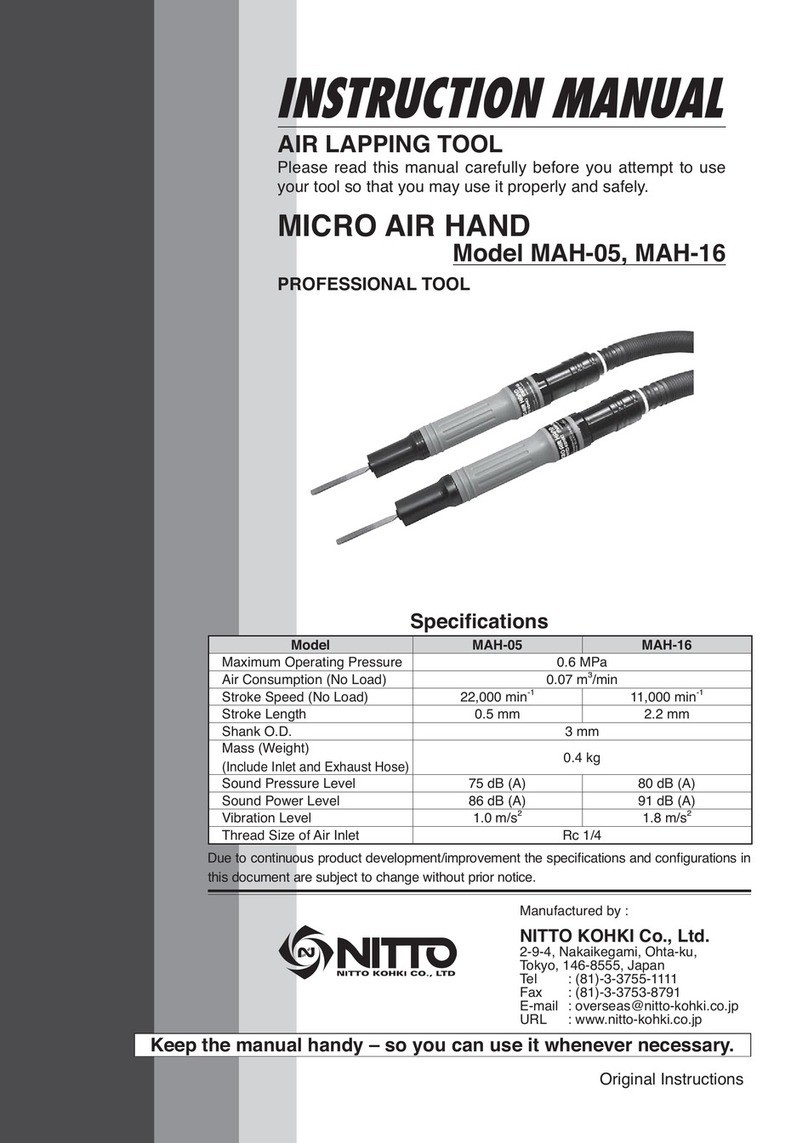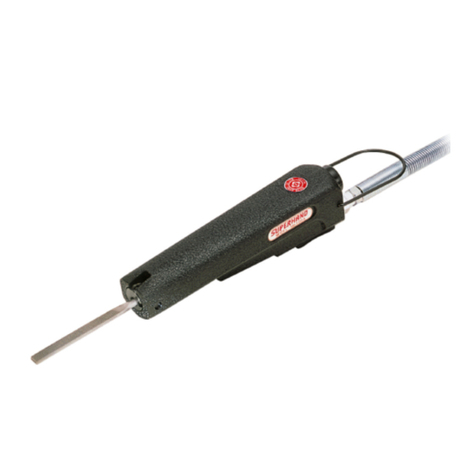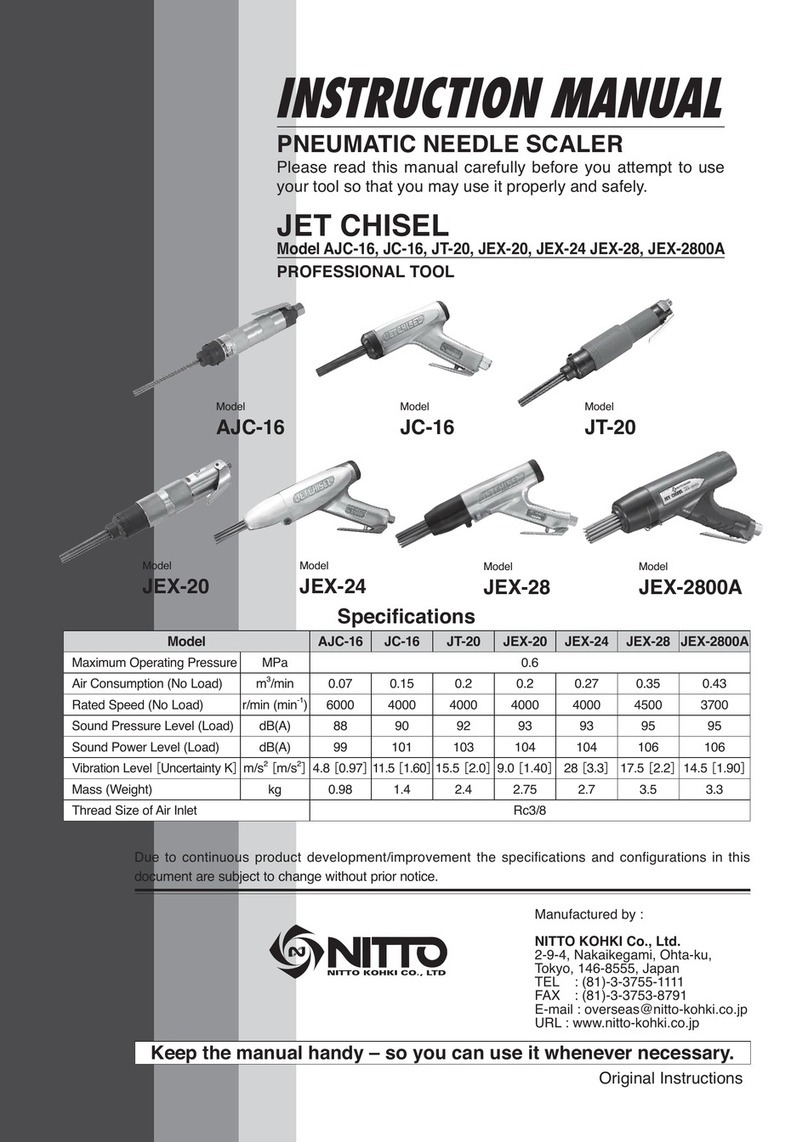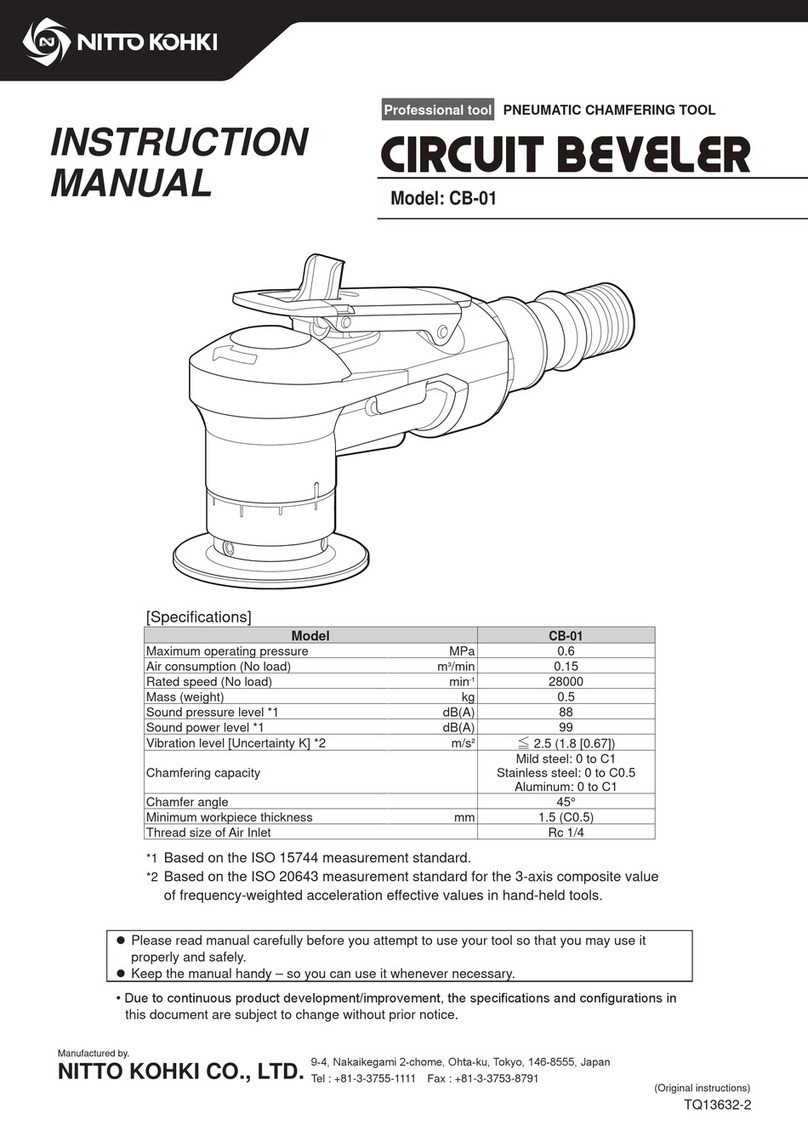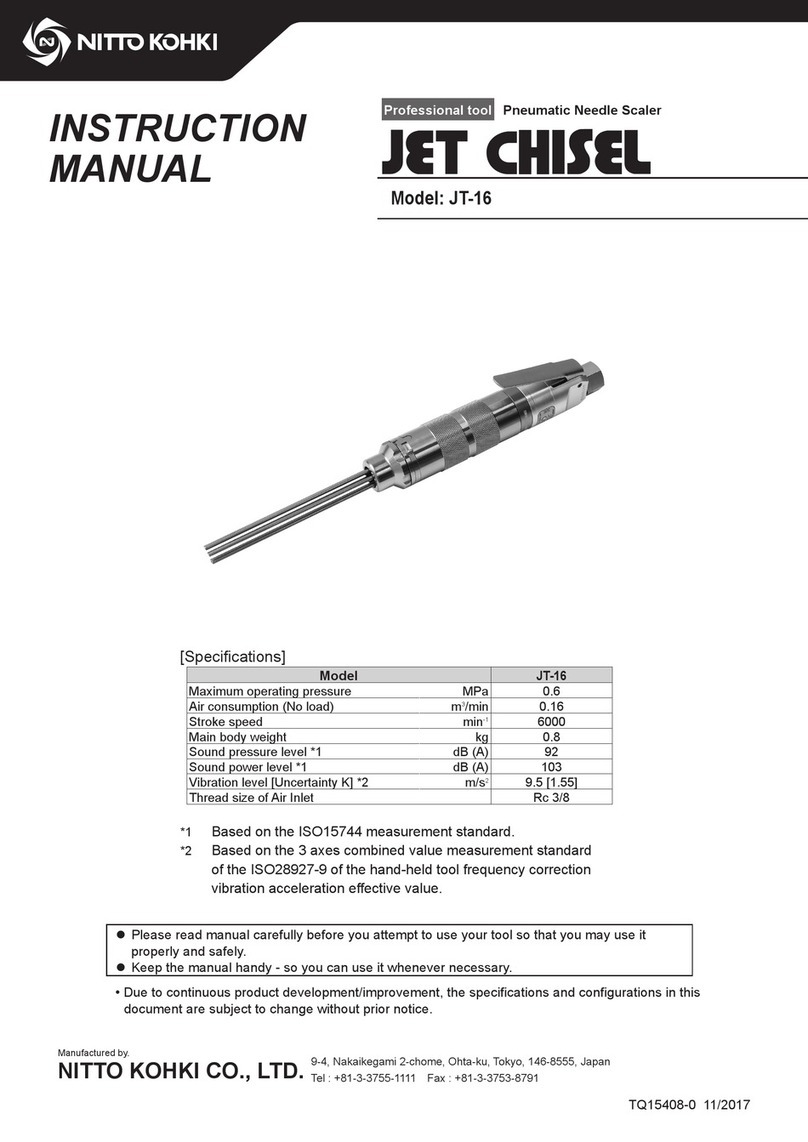
EN
Instructions
Thank you very much for your purchase of this NITTO KOHKI product.
Before using your tool, please read this manual carefully so that you may use it properly to get the most out of it.
Please keep the manual handy - so you can use it whenever necessary.
English : Please ask your dealer or distributor for instruction manual in local language(s).
German : Bitte fragen Sie lhren Händler nach eine Betriebsanleitung in Landessprache.
French : S'il vous plait, veuillez demandez á votre foumisseur de manuel instruction en langue locale.
Spanish : Por favor, cantacte con su distribuidor para el manual de instrucciones en español.
Portuguese : Por favor pessa ao seo agente ou distribuidor o manual de instrucces ih linguagen local.
Italian : Per Manuale Istruzioni in lingua locale Vi preghiamo di rivolgervi al rivenditore o distributore.
Dutch : Vraag uw handelaar om een nederladstalige gebruiksaanwijzing.
Swedish : Be er lokala Åtreförsäljare eller distributör om manualer pá svenska.
Danish : Venligst henvend Dem til den danske distributør for instructions manualer.
Polish : Prosze pytac swojego dealera lub dystrybutora o instrukcje obslugi w jezyku localnym.
中文 : 請向當地供應商或經銷商詢問中文使用說明書
The following Safety notations are used throughout the manual to highlight safety precautions for the user and for the tool.
WARNING: Indicates a potentially hazardous situation which, if not avoided by following the
instructions given, could result in death or serious injury.
CAUTION: Indicates a potentially hazardous situation which, if not avoided by following the
instructions given, could result in injury or material damage.
* Please note, however, that failure to observe safety precautions under the “ CAUTION” category could result in
a serious occurrence depending on the situation.
Please observe all safety precautions in the manual.
CAUTION:Important precautions for tool setup, operation and maintenance.
About pictograms
WARNING:It might be dangerous to operate the tool if the instructions supplied are not followed.
Using this tool improperly could result in serious injury. Read the instruction manual before using.
Always wear suitable eye protection.
Always wear suitable hearing protection.
Always wear respiratory protective equipment (PPE).
Contents
Precautions on Use
(Make sure to follow the instructions given) .........1
1 Application .....................................................9
2 Checking Inside the Package ........................9
3 Air Supply.....................................................10
4 Mounting and Removing the File................. 11
Mounting / Removing the file (Fig. 1)..................11
5 How to Operate the Tool..............................12
Start and Stop (Fig. 2).........................................12
How to use the Sanding Pad
(Optional Parts) (Fig. 3) ......................................12
6 Thread Size of Hose Fitting .........................13
7 Storage ........................................................13
8 Optional Parts..............................................13
9 Ordering Parts..............................................13
